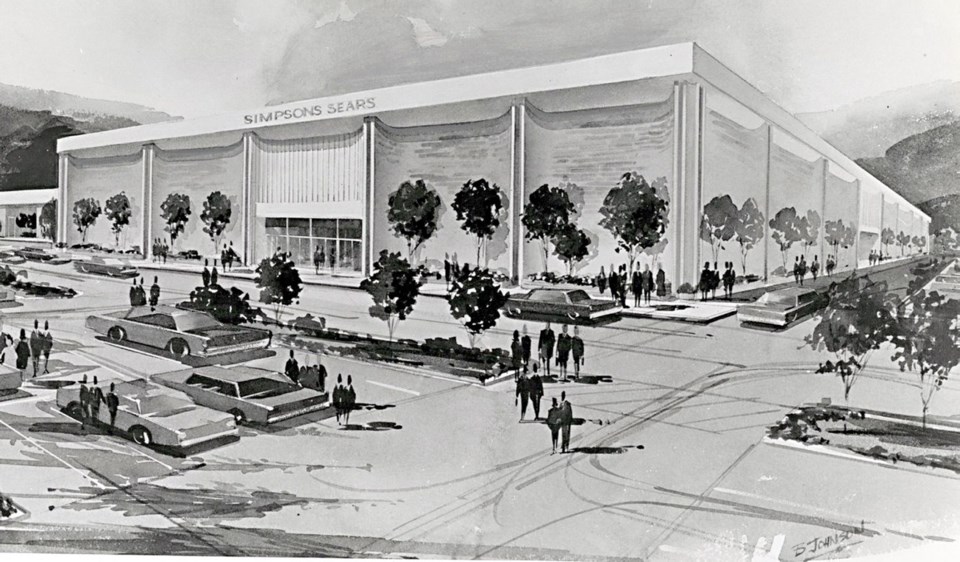 The imminent loss of a major retailer such as Sears is not something we should shrug off. The closure of a national department-store chain is not just a reflection of the tsunami of change that has hit all traditional retailers this century, it could be seen as a canary in a coal mine.
The imminent loss of a major retailer such as Sears is not something we should shrug off. The closure of a national department-store chain is not just a reflection of the tsunami of change that has hit all traditional retailers this century, it could be seen as a canary in a coal mine.
Or more likely, yet another canary, because Sears is not the first retailer to disappear. And rest assured, the entire community feels the impact when retailers slip away.
The closure of the Nanaimo Sears store was announced a few weeks ago. Now that the entire chain is turning out the lights, the Victoria store will close as well. A lot of history was packed into that Hillside shopping centre location, since Sears has been an anchor tenant since the mall opened in 1969.
Back then, it was busy, and it remained busy for years and years, a shopping destination along with the Bay and Eaton’s downtown, Woodward’s at Mayfair, Woolco at Town and Country, and Kmart at University Heights. Only the Bay remains.
Beyond that, Sears had home stores and repair shops and catalogue outlets, where you could go to pick up the stuff you had ordered by telephone. It was the 1950s, 1960s or 1970s equivalent of online shopping.
To those of us who lived in the hinterland, those catalogues were worth their weight in gold. They would come from Sears and from Eaton’s, two large ones a year, along with the colourful Christmas catalogues.
They mattered, and here’s a personal example. Fifty years ago, I was a high-school kid in Smithers. The Beatles had a new album out, Sgt. Pepper’s Lonely Hearts Club Band. I tried, I tried, but I never found it in the hardware store or the grocery stores, the only places in Smithers that sold records. I finally ordered a copy from Eaton’s and had it on my record player a couple of weeks later.
Fast forward half a century. Buying habits have changed. For many people, online shopping has become the new normal. It’s not just to get those special things that are not available locally, it’s for everything.
But the convenience of buying from a distant online retailer such as Amazon comes at a cost, even though the price might be lower and shipping might be free.
Unless those online retailers have local people on staff, the money they take in leaves this community and stays away.
Local retail stores pay taxes here, and at a much higher rate than is paid on residential property. Amazon and the rest pay no local taxes; they are not helping to pay for municipal services. It’s that simple.
We hear fears about the impact of Airbnb, and what that online service might do to the hotel industry. We hear about Uber and its possible impact on the taxi industry. But what about local retailers, who are also under attack via the web?
Retailers tell me that younger consumers are more likely to do their buying online, but whatever the demographic, the demand is there, and businesses need to go to where the customers are to be found. Investing in online shopping software will help them serve today’s customers and tomorrow’s.
It would also keep money in our community. There could be local jobs, including social-media managers, digital-inventory specialists, customer service reps who chat with remote clients in real time, and search-engine specialists who ensure that local companies are ranked at the top when someone searches for “buy a stove in Victoria” or whatever.
And, to be fair, consumers should make a point of seeking local retailers when they are buying online.
But online shopping is not the only reason retailers are closing. A business needs to change with the times; a diverse, timely product mix and a welcoming store layout help provide an incentive for people to enter and buy. That is why some retail stores here are doing well — they adapted to today’s consumer demands.
In the end, local stores have products you can’t find elsewhere. It’s better to buy from your neighbours. With those two factors, and as long as the in-person shopping experience outweighs the convenience of buying online, local retail can survive and thrive.
This matters. If we lose local retail, we will all pay more.



